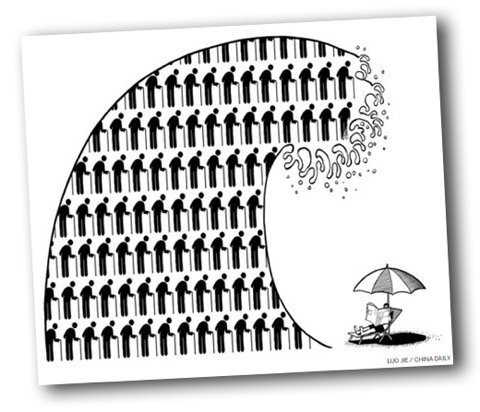Increased life expectancy and declining birth rates are two consequences of the progress in 20th century sanitary and social conditions. The result is that the population pyramid is inverting in the 21st century.
In Spain for example, 14 million babies were born between 1957 and 1977, in the so-called “baby-boom”. The population was mostly young and the demographic figure corresponded to a triangle. From the 90’s, the base of the pyramid began to narrow and in 2008 the population curve appeared more like a rhombus. The total inversion of the triangle is projected to occur in 2050. By that time, the over 60’s will be the largest population group, something that has never been seen in the history of mankind.
In Germany, one of the main sources of visitors to Spain and the second largest tourist market worldwide, the future is alarming. To maintain the current rate of dependence, in other words, the proportion between the social system’s contributors and beneficiaries, Germany will need 188 million young immigrants up to 2050, something difficult to imagine in a country of 80 million in 2013. China also faces a demographically uncertain future.
A negative consequence for tourism may be that the active population has to work longer hours and for a greater number of years, to keep the system going. They will therefore have fewer children and less free time for leisure. The upside of this phenomenon is that it is generating lucrative opportunities in the leisure industry. Generally, this is a growing, discerning public, with money and free time and in some parts of Spain, there is already great experience with this public.
The treatment of the “older” collective, based simply on status or mobility, will no longer be applicable in the future. Technological transformations, social changes and changes in values, (family, sacrifice, work, fun, tolerance), will make over 60’s consumers respond less and less to one sole pattern. The senior segment is formed by diverse tourists who have different interests, attitudes and tourist consumption patterns. They don’t even consider themselves to be “older”!
In the U.S.A, a rapidly aging country, there are already a whole class of terms coined to subdivide this growing mass of the population, (selpies, grumpies, grampies, glemps, etc). European tourist studies classify consumer profiles of the over 60’s as “enthusiasts”, “discoverers”, “relaxed”, “cultural” or “passive” and the profiles overlap.
The tourism sector should make the most of the market opportunities of this group, as it is a progressively and predictably growing collective. They are increasingly more willing to travel, they are in better physical and intellectual condition and they have greater purchasing power. They are also very demanding and have an increasingly better understanding and command of new information and communication technologies. They show themselves eager to learn about cultures and people, have experiences, learn, remember and forget. In short, to enjoy all of life’s facets.
These opportunities provide the option of creating new tourist businesses and they justify the rethinking of existing infrastructures. Will the tourist industry age as well as we do? What will we be like?







